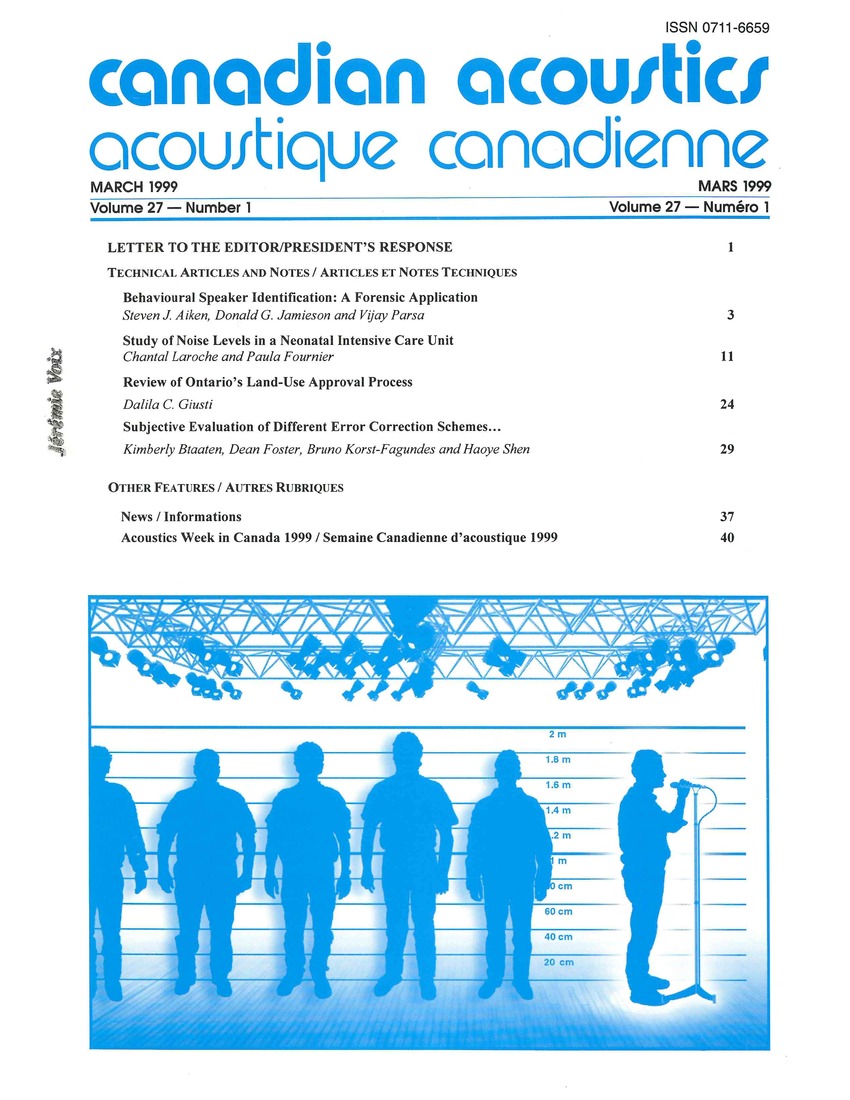Study of noise levels in a neonatal intensive care unit
Keywords:
Acoustic intensity measurement, Acoustic variables control, Intensive care units, Nursing, Personnel training, Neonatal intensive care units (NICU), Noise levelsAbstract
The integrated care approach has been a focal point of interest for the past few years. In this approach, noise is viewed as a compromising element in the normal development of newborns in neonatal intensive care units. The objective of this study was to develop a methodology that could evaluate the impact of a training program designed for nurses regarding existing noise levels within a neonatal intensive unit. This method entails measurements of noise levels and their sources. The method's development was based on a continuous evaluation of noise levels in a neonatal intensive care unit (NICU), using a computer (type 1 sound-level metre) before the nurses' training. In order to evaluate the impact of the nurses' training, noise level measurements obtained before training at described locations are to be repeated after training. LAeq, 1 sec, as well as audio samples were recorded throughout 8 work shifts. The project was conducted in an Ottawa regional hospital that specializes in the treatment of sick children. The average pre-training noise levels were 53 dBA, 61 dBA and 65 dBA, for the night, day, and evening shifts respectively. These levels largely exceed the maximum sound level of 40 dBA recommended by the World Health Organization to avoid negative effects on sleep in hospitals. On the basis of this study, the training of nurses likely contributes to the reduction of noise levels in NICUs, but interventions concerning noise control are also necessary in order to ensure an acceptable sound environment for neonates requiring intensive care. (Project supported by the University of Ottawa).Additional Files
Published
How to Cite
Issue
Section
License
Author Licensing Addendum
This Licensing Addendum ("Addendum") is entered into between the undersigned Author(s) and Canadian Acoustics journal published by the Canadian Acoustical Association (hereinafter referred to as the "Publisher"). The Author(s) and the Publisher agree as follows:
-
Retained Rights: The Author(s) retain(s) the following rights:
- The right to reproduce, distribute, and publicly display the Work on the Author's personal website or the website of the Author's institution.
- The right to use the Work in the Author's teaching activities and presentations.
- The right to include the Work in a compilation for the Author's personal use, not for sale.
-
Grant of License: The Author(s) grant(s) to the Publisher a worldwide exclusive license to publish, reproduce, distribute, and display the Work in Canadian Acoustics and any other formats and media deemed appropriate by the Publisher.
-
Attribution: The Publisher agrees to include proper attribution to the Author(s) in all publications and reproductions of the Work.
-
No Conflict: This Addendum is intended to be in harmony with, and not in conflict with, the terms and conditions of the original agreement entered into between the Author(s) and the Publisher.
-
Copyright Clause: Copyright on articles is held by the Author(s). The corresponding Author has the right to grant on behalf of all Authors and does grant on behalf of all Authors, a worldwide exclusive license to the Publisher and its licensees in perpetuity, in all forms, formats, and media (whether known now or created in the future), including but not limited to the rights to publish, reproduce, distribute, display, store, translate, create adaptations, reprints, include within collections, and create summaries, extracts, and/or abstracts of the Contribution.


